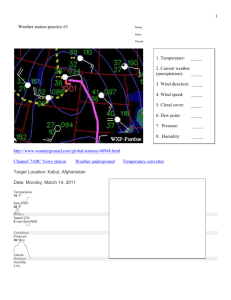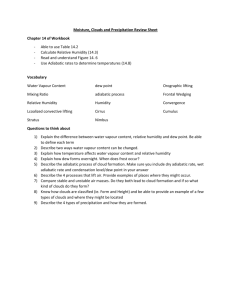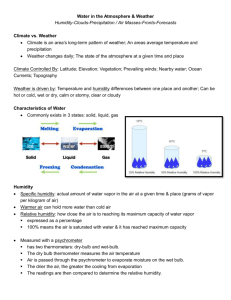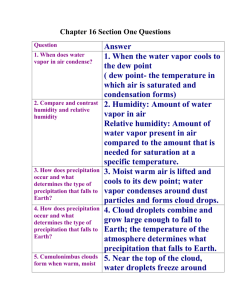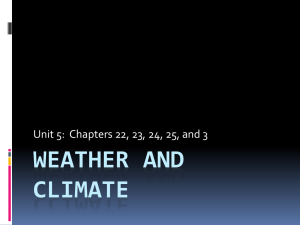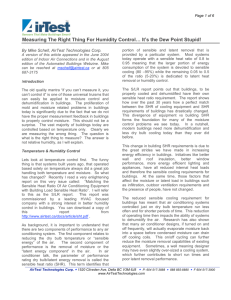Weather – Quick Reference
advertisement
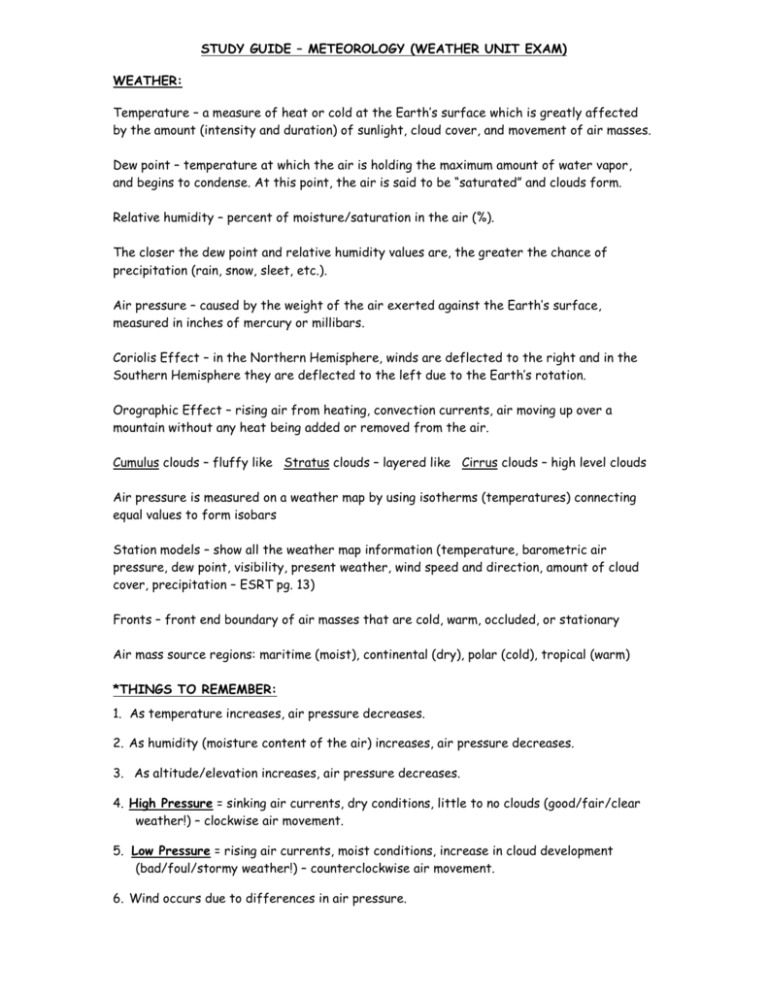
STUDY GUIDE – METEOROLOGY (WEATHER UNIT EXAM) WEATHER: Temperature – a measure of heat or cold at the Earth’s surface which is greatly affected by the amount (intensity and duration) of sunlight, cloud cover, and movement of air masses. Dew point – temperature at which the air is holding the maximum amount of water vapor, and begins to condense. At this point, the air is said to be “saturated” and clouds form. Relative humidity – percent of moisture/saturation in the air (%). The closer the dew point and relative humidity values are, the greater the chance of precipitation (rain, snow, sleet, etc.). Air pressure – caused by the weight of the air exerted against the Earth’s surface, measured in inches of mercury or millibars. Coriolis Effect – in the Northern Hemisphere, winds are deflected to the right and in the Southern Hemisphere they are deflected to the left due to the Earth’s rotation. Orographic Effect – rising air from heating, convection currents, air moving up over a mountain without any heat being added or removed from the air. Cumulus clouds – fluffy like Stratus clouds – layered like Cirrus clouds – high level clouds Air pressure is measured on a weather map by using isotherms (temperatures) connecting equal values to form isobars Station models – show all the weather map information (temperature, barometric air pressure, dew point, visibility, present weather, wind speed and direction, amount of cloud cover, precipitation – ESRT pg. 13) Fronts – front end boundary of air masses that are cold, warm, occluded, or stationary Air mass source regions: maritime (moist), continental (dry), polar (cold), tropical (warm) *THINGS TO REMEMBER: 1. As temperature increases, air pressure decreases. 2. As humidity (moisture content of the air) increases, air pressure decreases. 3. As altitude/elevation increases, air pressure decreases. 4. High Pressure = sinking air currents, dry conditions, little to no clouds (good/fair/clear weather!) – clockwise air movement. 5. Low Pressure = rising air currents, moist conditions, increase in cloud development (bad/foul/stormy weather!) – counterclockwise air movement. 6. Wind occurs due to differences in air pressure. 7. Wind always moves from regions of high pressure to regions of low pressure perpendicular to the isobars. Isobars that are close together = steep pressure gradient = high wind speeds. 8. Wind is named by the direction it is coming from. 9. Surface High Pressure (anticyclones) = Clockwise and divergent winds (clear weather). 10. Surface Low Pressure (cyclones) = Counterclockwise and convergent winds (storms). 11. *The closer the dew point temperature gets to the air temperature, the greater the chance for precipitation. If the dew point temperature and air temperature are the same, this equals 100% humidity (which means precipitation!!) 12. In the middle latitudes (NYS), weather moves from West to East. Prevailing westerlies – the wind is named for the direction it comes from. 13. Precipitation occurs when: warm, moist air rises, cools adiabatically (due to expansion), reaches dew point temp., condensation occurs (on condensation nuclei), droplets collect in masses (cloud formation) and when water drops are large enough precipitation occurs 14. Air cools adiabatically as it ascends up a mountain due to expansion. 15. Air warms adiabatically as it sinks due to compression. 16. Air masses are characterized by their TEMPERATURE and MOISTURE characteristics. 17. The leading edge of the air mass is called the FRONT. 18. Air masses are identified by their source region (continental or maritime) and their temperature (Artic, Polar, or Tropical). EARTH SCIENCE REFERENCE TABLES: PAGES YOU NEED TO KNOW!! PAGE 1 – Equations (Gradient and Rate of Change) PAGE 1 – Specific Heat of Common Materials chart PAGE 1 – Properties of Water chart PAGE 1 – Average Chemical Composition of Earth’s Crust, Hydrosphere, & Troposphere chart PAGE 12 – Dewpoint (oC) table PAGE 12 – Relative Humidity (%) table PAGE 13 – Temperature scale PAGE 13 – Pressure scale (barometric pressure/air pressure) PAGE 13 – Key To Weather Map Symbols (Station Model Explanation) PAGE 13 – Present Weather, Air Masses, and Fronts charts, Hurricane and Tornado symbols PAGE 14 – Selected Properties of Earth’s Atmosphere (layers of the atmosphere) PAGE 14 – Planetary Wind and Moisture Belts in the Troposphere drawing PAGE 14 – Electromagnetic Spectrum scale COLD FRONT WARM FRONT STATIONARY FRONT OCCLUDED FRONT


